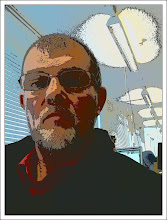This gargoyle overlooks Howard Street from the roof of Fisherwick Presbyterian Church. The former administrative headquarters of the Presbyterian Church in Ireland has been carefully restored and the ground floor is now "The Spires" shopping arcade.
The building was opened in 1905 by the Duke of Argyll and its tower, which houses Belfast's only peal of 12 bells, is modelled on that of St. Giles' Cathedral in Edinburgh. The turret clock by Sherman O'Neil was the first in the British Isles to employ electricity to drive the clock and the chiming and carilon parts. (Thanks to Victorian Web and also for the following information)


The building was opened in 1905 by the Duke of Argyll and its tower, which houses Belfast's only peal of 12 bells, is modelled on that of St. Giles' Cathedral in Edinburgh. The turret clock by Sherman O'Neil was the first in the British Isles to employ electricity to drive the clock and the chiming and carilon parts. (Thanks to Victorian Web and also for the following information)

In 1900, Sir Thomas Drew was appointed Assessor in the competition
for the design of a new Church House and Assembly Hall to be erected for the
Presbyterian Church in Ireland on the site of the old Fisherwick Church, that
congregation having built itself a Church on Malone Road [south of the City
Centre] to designs by S. P. Close. There followed one of the most resounding
rows in architectural history. Various thunderous leaders appeared in the Irish
Builder, and in the British Architect; and several acid letters. The original
conditions, it appears, had been drawn up by Robert Young as architect to the
Presbyterian Church. It was laid down that the buildings, which were to contain
specified accommodation, should cost no more than £30,000. A number of entries
were received; but Sir Thomas Drew concluded that compliance with this condition
was impracticable, and the competition was abortive, though a young architect
named Savage obtained first place. Indeed, Drew described the conditions as
being 'in terms of unusual stringency, a distasteful and impossible task'.
Instead of revising the terms of the competition, the Church authorities,
astoundingly, appointed Robert Young and his partner Mackenzie to erect the
buildings as specified which they did, 'at a cost of about £70,000'!

The Presbyterians, in an unparalleled stroke of ecclesiastical one-upmanship, sought to redress the adverse balance of publicity by letting it be known that the angel's faces on the building were being 'specially copied from life.'
These are some of the fantastical creatures to be found on the facade. And these must be the aforementioned angels.


